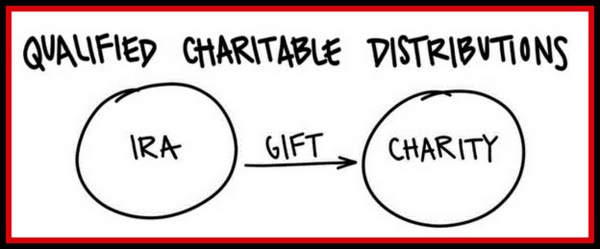IRAs & the Secure Act of 2019

WHAT CHANGES DID THE SECURE ACT MAKE TO IRAs?
STRETCH IRAs ELIMINATED
• Previous to SECURE, IRAs inherited by non-spouse beneficiaries could be “stretched” out, and continue to grow tax-deferred, at a rate based on the beneficiary’s life expectancy – not the original account owner’s life expectancy.
• SECURE mandates that inherited IRAs be emptied within 10 years after the death of the original account owner, regardless of the age of the beneficiary.
AGE LIMIT ON CONTRIBUTING TO AN IRA ELIMINATED
• In prior years, IRA owners could no longer contribute to their IRA beginning in the year they turned 70 ½.
• SECURE allows contributions to be made at any age, but the IRA owner must have earned income for the year in question.
• Limit of $6,000 for 2019 & 2020.
AGE FOR TAKING REQUIRED MINIMUM DISTRIBUTIONS RAISED TO 72
• Previous to SECURE, owners of traditional IRAs had to begin taking RMDs in the year they turned 70 ½.
• SECURE raised this age to 72.
• However, just as before the SECURE Act, IRA owners can start taking distributions from their IRAs after age 59 1/2 without being subject to penalties (distributions are taxed, but no penalties are assessed).
WHAT ABOUT CHANGES TO IRA QCDs?
NO CHANGE IN AGE FOR MAKING AN IRA QCD
• IRA owners can still make Qualified Charitable Distributions (QCDs) beginning in the year they turn 70 ½, whether or not they are required to take RMD.
• IRA QCDs still count toward RMDs, but…
IRA QCDs NOW COORDINATED WITH CONTRIBUTIONS AT 70 ½ OR OLDER
• Because IRA owners can now contribute to their IRA after 70 ½, and those contributions are deductible, SECURE reduces the allowable QCD by the deduction allowed for the IRA contribution. This limits QCDs not just in the year the QCD is made, but also in future years.
Example: Joe made traditional IRA contributions at age 71 and 72 totaling $14,000. A few years later, Joe directs the custodian of his IRA to make a qualified charitable distribution of $25,000 to the Salvation Army. The first $14,000 of the distribution is not treated as a QCD, but will be included in Joe’s income as a taxable distribution. (However, Joe may deduct $14,000 on his Schedule A as a charitable contribution as any taxpayer can making a non-IRA gift to charity).
IRA QCDs REMAIN A TAX-WISE WAY TO SUPPORT CHARITY
• IRA QCDs remain a good way to make charitable contributions using assets taxed at high rates (IRA withdrawals are taxed as ordinary income). This allows IRA owners to “spend down” assets that will carry high tax burdens for heirs who inherit them – and, perhaps, give other more of other assets that will not carry this tax burden to heirs.
Example: Making a $10K IRA gift to Channing House. The QCD would be a reportable distribution, but not a taxable distribution (The 1099-R would show a total distribution from the IRA of $10K, but the tax return would show the taxable amount as $0).
• IRA owners age 72 or older can count allowable QCD against their RMD.
• Some plans provide IRA owners with check writing privileges on their IRA account. IRA owners can use checks to make IRA gifts directly to the charities they wish to support.
Still have questions? Contact Colleen Cushard at 513-721-4700 ext 3219 or ccushard@franciscan.org
For more ways to support the Franciscan Friars and their ministries, visit our Leave a Legacy page.
Posted in: Estate Planning, Support the Friars
